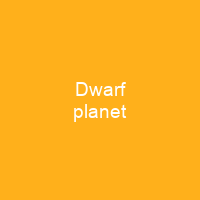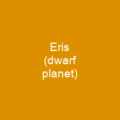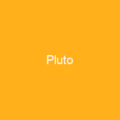A dwarf planet is a planetary-mass object that does not dominate its region of space and is not a satellite. It is in direct orbit of the Sun and is massive enough to be plastic – for its gravity to maintain it in a hydrostatically equilibrious shape. The interest of dwarf planets to planetary geologists is that, being possibly differentiated and geologically active bodies, they may display planetary geology.
About Dwarf planet in brief

The number of dwarf planet in the Solar System is unknown. This is because determining whether a body is in hydrostatic equilibrium requires close observation by spacecraft. The half-dozen largest candidates have either been visited by spacecraft or have at least one known moon, which allows their masses and thus an estimate of their densities to be determined. For almost 50 years Pluto was thought to be larger than Mercury, but with the discovery in 1978 of Pluto’s moon Charon it became possible to measure Pluto’s mass accurately and to determine that it was much smaller. It was roughly one-twentieth the mass of Mercury, which made Pluto by far the smallest planet. Although it was still more than ten times as massive as the largest object in the asteroid belt, Ceres,. Furthermore, having some unusual characteristics, such as large orbital eccentricity and a high orbital inclination, it became evident that Pluto was a different kind of body from any of the other planets. Several terms, including subplanet and planetoid, started to be used for the bodies now known as dwarf planets. For decades, Ceres and other bodies between Mars and Jupiter were considered to be planets. Between then and around 1851, astronomers started using the word asteroid for the smaller bodies and then stopped naming or classifying them as planets. It became clear that either the larger of these bodies would also be classified as planets, or Pluto would have to be reclassified. This led some astronomers to stop referring to Pluto as a planet.
You want to know more about Dwarf planet?
This page is based on the article Dwarf planet published in Wikipedia (as of Dec. 06, 2020) and was automatically summarized using artificial intelligence.







